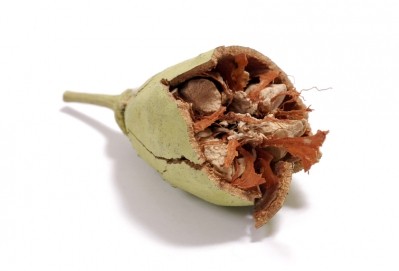ORAC has ‘ongoing value’, says expert, as USDA removes online database

The USDA’s Nutrient Data Laboratory (NDL) recently removed the USDA ORAC Database for Selected Foods from its website, a move that has sparked a fiery response from former ARS-USDA scientist Ronald Prior, PhD, and long-time ORAC researcher.
“Without the ORAC database, we would not have had the opportunity to gather important epidemiology data that we now have relating antioxidant intake and various disease endpoints,” wrote Dr Prior in a four-page letter in response to the removal of the ORAC database.
Please click here to read Dr Prior’s full letter.
The USDA cites two main reasons for the removal of the ORAC Database:
- The values indicating antioxidant capacity have no relevance to the effects of specific bioactive compounds, including polyphenols on human health.
- ORAC values are routinely misused by food and dietary supplement manufacturing companies to promote their products and by consumers to guide their food and dietary supplement choices.
Response
In his response, Dr Prior writes: “It is unfortunate but true that numbers obtained from ORAC analysis have sometimes been misused, but that does not necessarily mean that the information is not useful if used appropriately.
“In too many cases, the goal has been to obtain the highest antioxidant value. It is not always the case that ‘more is better’ and in some cases using individual antioxidant compounds, more may be detrimental. A lot of misunderstanding results from lack of knowledge of free radical chemistry.
“Results with assays utilizing different oxidant or radical sources cannot produce exactly comparable data because the reaction mechanisms differ.”
Dr Prior notes that, while the USDA is removing its database, another database was recently launched in South America for fruits.
No evidence? There is evidence
Dr Prior also strongly disagreed with the USDA's statement that: “There is no evidence that the beneficial effects of polyphenol-rich foods can be attributed to the antioxidant properties of these foods”.
This statement, he said, was not consistent with the scientific evidence, and he specifically cited a recent study that concluded: “Using the ORAC database, after adjusting for major covariates, we found decreased risks for the highest tertile of total phenolic intake compared with the lowest, … suggesting that total phenolic consumption may decrease endometrial cancer risk.”
Dr Prior added: "In fact, in the last 3 years there have been more than 25 publications dealing with dietary antioxidants (polyphenolics) and in vivo antioxidant status or disease."
Evolution
The ORAC assay has also evolved beyond the single peroxyl radical test, said Dr Prior, to include a number of different radical sources, including hydroxyl, superoxide, peroxynitrite, and singlet oxygen.
“Industry and science need to continue to develop more specific biomarkers of health and develop a better understanding of what happens to many of these bioactive flavonoid compounds during the digestion and absorption process.
“The expectation has never been that any one in vitro assay, regardless of its nature, would truly reflect everything that happens during this process. Without the ORAC database, we would not have had the opportunity to gather important epidemiology data that we now have relating antioxidant intake and various disease endpoints.
“Those involved in marketing are encouraged to use the data available in a reasonable way backed up with the best science that is available,” concluded Dr Prior.
Agreement
Speaking with NutraIngredients-USA, Frank Jaksch, CEO and co-founder of ChromaDex, said he agreed with Dr Prior's response. "There has been a blatant misuse of ORAC over the past few years as some companies would manipulate their ORAC values to show higher numbers as compared to competing products," he said.
"This quest for higher ORAC numbers accelerated the chemical manipulation of products with the sole purpose of providing higher ORAC values, not better products. Higher ORAC values does not make a product better for you than another product with a lower number, and this can be very misleading to consumers."
Brunswick
1) No in vitro assay that quantifies a characteristic of a nutritional product describes in vivo outcomes and should not be used to suggest such a connection
2) Vital information about metabolism, bioavailability, mechanisms of action, and efficacy are not measured by any such in vitro assay
3) There is evidence that polyphenols are connected to beneficial human health outcomes
4) There is evidence that these beneficial outcomes have antioxidant as well as diverse other mechanisms of action
5) ORAC has been and remains a valuable analytical tool in connection with other investigative methods
















